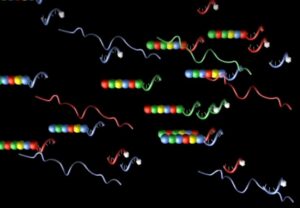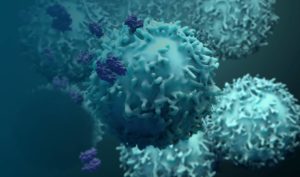
NanoString Blog
Category: nCounter

nCounter
Common questions in molecular biology: Why is it called DNA barcoding?
DNA barcoding was named for its conceptual similarity to the Universal Product Codes (UPCs) used by supermarkets and other retailers to distinguish commercial products via a unique digital code. Based…

nCounter
Common questions in molecular biology: What is a cell counter used for?
Cell counters are machines, typically automated, designed to count living cells quickly and autonomously. Employed in the life sciences, cell counters quantify cells for a wide range of reasons using a variety of…

nCounter
Why Oligonucleotides Are Critical Components of DNA and RNA Expression Research
With all the advances in molecular biology over the last several decades, one of the most consistently used tools is the oligonucleotide. Oligonucleotides are relatively short (oligo) single-stranded sequences of…

nCounter
How DNA Barcoding Improves Gene Expression Analysis and Biomarker Discovery
The phrase “DNA barcoding” can be applied to several methods of using unique DNA sequences for identification purposes. Sometimes known as “molecular barcoding,” DNA barcoding describes the use of unique…

nCounter
How Cell Counters and Cell Type Profiling Can Help Analyze Gene Expression Profiles
Cell counters, also known as cell sorters, are instruments that separate and count specific cells of interest using characteristic properties of those cells. The original cell counters, known as Coulter…

Clinical Research nCounter
Gene Expression Can Drive Your Research to New Heights
The word “gene” refers not only to the actual physical DNA that codes the gene itself, but also to all related downstream events, including gene expression, gene regulation, and gene…

Data Security nCounter
Is your Lab Secure? Exploring the New Cyberbiosecurity World
As someone who is involved in molecular biology research, how often do you think about cybersecurity? Occasionally? Never? Perhaps you only think about them when you receive an email from…

Infectious Disease nCounter
An nCounter® in The Gambia: An interview with Tuberculosis Researcher Jayne Sutherland
NSTG: Jayne, it’s so lovely to meet you. Could you tell us about your background and your research interests? Jayne Sutherland: I’m an immunologist by training; for my Ph.D., I studied cancer.…

nCounter
Gx Profiling Made Easy: The Birth of nCounter®
Nanostring: noun; a piece of DNA (probe) attached to a linear sequence of fluorophores made up of four different colors (barcode). Each probe is complementary to a unique target oligonucleotide.…

Digital Spatial Profiling GeoMx DSP nCounter Oncology Spatial Transcriptomics
New approaches to CAR-T therapy
What is CAR-T cell therapy? In the fight against cancer, immunotherapies that enlist and strengthen the power of a patient’s immune system to attack tumor cells have revolutionized treatment paradigms.…

Digital Spatial Profiling nCounter Neuroscience Spatial Transcriptomics
Neurodegenerative disorders and Parkinson’s disease.
The idiom “to lose one’s nerves” is literally true when it comes to neurodegenerative disorders. These disorders are characterized by the progressive loss of disease-specific neural populations in the brain…

nCounter Neuroscience Spatial Transcriptomics
Alzheimer’s Disease Pathology: Fear, Confusion, and the Search for a Cure
Alzheimer’s disease pathology: a short sentence loaded with fear, confusion, and incredulity. The word “Alzheimer’s” first appeared in a German psychiatry handbook called “General Psychiatry” on July 15, 1910. This…